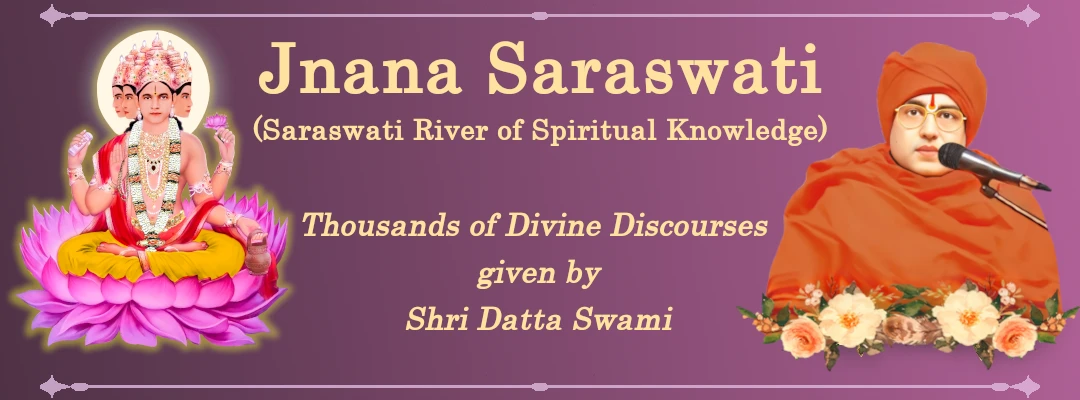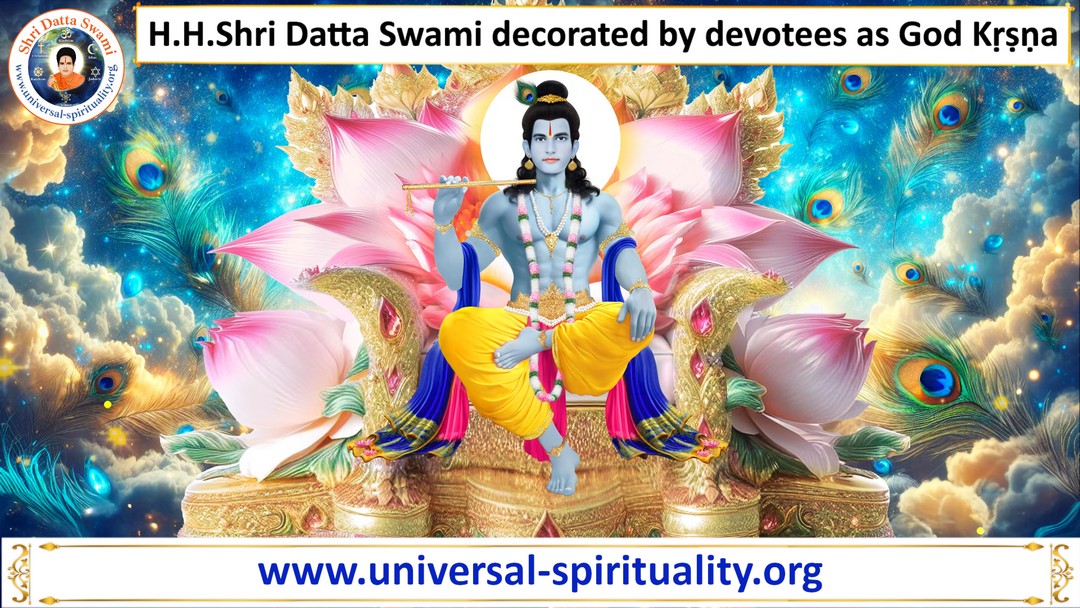
01 Aug 2024
[Ms. Thrylokya asked:- Swami, You said that the individual soul (Jiiva) made of mind existing in a subtle body, which is made of Praana, travels to the upper world after leaving the gross body in this world. Please elaborate this point with more clarity.]
Swami replied:-
Introduction:- There are five sheaths (Koshas):-
i) Annamaya Kosha or Matter:- The gross body consists of food taken by the human being and that gross body is left here after death. The food or gross body is made of five elements and one of the five elements is oxygen (air) or Praana. The inert energy is also included in these five elements as Agni or fire or gross inert energy.
ii) Praanamaya Kosha or Inert Energy:- Generally, Praana means oxygen, which generates inert energy after oxidation of food in mitochondria cells. Here, the word ‘Praana’ should not be taken as pure oxygen gas, but should be taken as the inert energy that is generated by oxygen through oxidation of food. A golden jewel generated from gold can be also called as gold. Similarly, the inert energy generated from oxygen can be also called as oxygen or Praana.
iii) Manomaya, Vijnaanamaya and Aanandamaya Koshas or Awareness:- These three Koshas are made of awareness. Awareness is a specific work form of the inert energy released from the oxidation of food. Since all these five Koshas are referred in the human being, the inert energy released from the oxidation of food alone is called Praanamaya Kosha. In the external world, there are several oxidation reactions taking place releasing inert energy and such inert energy is not called as Praanamaya Kosha even though the inert energy released from external oxidation and the inert energy released in the oxidation of food in the human being are one and the same exact inert energy. Hence, the inert energy released from the oxidation of food in a human being is related to the generation of awareness. Hence, awareness generated as a specific work form of inert energy in the functioning nervous system is the definition of ‘awareness’ in the human being. Of course, this definition applies to all zoological living beings.
From the above analysis, it can be easily understood that the three fundamental components of the creation are (i) Awareness (Sattvam), (ii) Inert Energy (Rajas) and (iii) Matter (Tamas). Now, you can understand the Vedic statement saying “The individual soul made of mind is leading the subtle body made of inert energy or Praana” (Manomayaḥ prāṇa śarīra netā). Following are the results:-
i) The individual soul is said to be made of mind. Mind is a bundle of thoughts or gunas, which are collected from various actions done during past several births. This bundle of gunas is called as Guna-shesha or Karma-shesha. Guna or quality is made of weak nervous energy and karma or action is made of strong physical energy. The individual soul is made of gunas or qualities made of weak nervous energy whereas the karmas or actions are made of strong physical energy and sometimes the strongest matter is also used as instruments. The individual soul is very subtle, made of weak nervous energy only and made of neither stronger physical energy nor the strongest matter. But, these weak nervous energies (thoughts or gunas) can correctly represent the ratio of stronger physical energies or actions (actions sometimes involving materialized instruments). Hence, the reminder of qualities (Guna-shesha) can exactly represent the reminder of actions (Karma-shesha). Hence, Karma-shesha shall not be taken in its original sense because the subtle soul cannot be a bundle of gross actions made of gross physical energies (sometimes involving materialized instruments).
ii) As analyzed above, Praana means inert energy that is produced by oxygen and not the actual oxygen gas. Praana Shariira means the subtle body made of Praana or inert energy.
Finally, the above analysis means that the individual soul can be concluded as the mind or bundle of thoughts or gunas collected from previous births and Praana Shariira means the subtle body made of inert energy. The individual soul made of nervous energies existing in subtle body made of inert energy goes up to the upper energetic worlds after leaving the gross body in this world. If Guna-shesha called as Karma-shesha is completely absent, the individual soul itself does not exist anymore and this is called as dissolution of mind, which means the complete absence of individual soul resulting in total dissolution of the soul itself. This is the foolish salvation misunderstood as the final salvation as per the followers of Advaita. This means that such salvation is a total loss for the individual soul. The meaningful salvation is that the individual soul will never dissolve completely so that it can be very close to God enjoying the everlasting bliss granted by God by keeping the individuality of the soul separately from God. Even in the incarnation, the merge of God and soul continues forever while the human being-component maintains its individual awareness enjoying the immortal bliss. In this stage also, monism can exist in the concept. People say that such and such couple is one only because whatever the husband decides, that is the decision of the wife and whatever the wife decides, that is the decision of the husband. This is called as conceptual monism (Bhaavaadvaita) and such monism is not at all different from the actual monism.

People think that dissolution of mind will result in the dissolution of individual soul and thus, they try to achieve the state of mind without thoughts. Even if one gets dissolution of thoughts from mind, such salvation (dissolution of individual soul) is not achieved by anybody through any amount of effort. The reason for this is that the mind consists of three types of thoughts:-
i) Vaasanas, which are strong thoughts like gaseous state of matter.
ii) Samskaras, which are stronger thoughts like liquid state of matter.
iii) Gunas, which are strongest thoughts like solid state of matter.
The dissolution of thoughts means the dissolution of all the above three types of thoughts and then only the individual soul disappears completely. Here, the thoughts that can be dissolved are to be taken to be vaasanas only since vaasanas can be dissolved easily. Even though vaasanas disappear, samskaaras and gunas will not disappear and hence, the individual soul does not disappear by the disappearance of simply vaasanas. The mistake committed by the people is that disappearance of vaasanas is misunderstood as disappearance of samskaras and gunas also. The strongest gunas (prakruti) become the inherent nature of the individual soul, which can never be dissolved by any effort. Hence, the individual soul can never cross its inherent nature reflected by gunas (prakruti) as told in the Gita (Prakṛtiṃ yānti bhūtāni, Prakṛter guṇa sammūḍḥāḥ…). The basic reason for strong vaasanas or stronger samskaaras or the strongest gunas is only the association and worry about the thoughts entering the individual soul from surrounding atmosphere in any birth (Dhyāyato viṣayān puṃsaḥ…). Here, the word ‘Dhyāyato’ (dhyaana) means the anxiety or interest or worry about the thoughts entered from surrounding atmosphere (Dhyai-cintaayaam). Once these thoughts are solidified like solid diamonds, the individual soul made of these solid diamonds cannot be modified by any effort. Based on the influence of these inherent qualities (gunas), the individual soul takes intensive interest in such atmosphere congenial to these gunas. By this, the gunas become further stronger and stronger. Hence, the gunas and association with such gunas gets repeated again and again so that one cannot divert from this kinetic equilibrium between forward reaction (association to gunas) and backward reaction (gunas to association). The individual soul gets permanently trapped in this kinetic equilibrium and to come out of this is beyond the capability of the individual soul. The spiritual knowledge preached by Sadguru especially about reformation alone is the path to get out of this trap.
The Gita says that the soul (or individual soul) is not born (ajah) and permanent (nityah). The word ‘non-born’ means that its birth is unknown because the time of the birth of the creation is unknown to us even though it has taken place when God created this creation (Ajñātaṃ janma yasya saḥ-ajaḥ). The soul (or individual soul) is born from botanical food in the sequence of creation by God (Annāt puruṣaḥ). Regarding the eternality of the soul, no effort can remove the crystalized qualities (gunas) from the soul unless God wishes. Even in the dissolution of the creation, the soul exists in subtle state (avyaktam) along with the other creation, which also exist in subtle state. The impossibility of destruction of the qualities (prakruti) of the soul (individual soul) establishes the eternality of the soul.
★ ★ ★ ★ ★